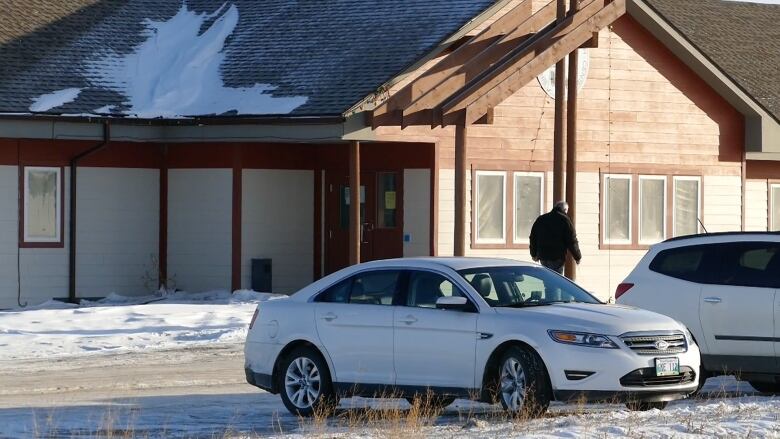Birdtail Sioux Dakota Nation healing garden will commemorate residential school survivors
Garden will also be used to teach students about the land and the impact of the schools

A First Nation near the Manitoba-Saskatchewan border will soon start construction on a healing garden to honour its survivors of the residential school system.
It will be built next to the health centre on the Birdtail Sioux DakotaNation, about 290 kilometres northwest of Winnipeg.
"I think it will give [people] a better understanding of the legacy it left behind," said Tanya Hanska, the director of the First Nation's health department, which is spearheading the effort.
"I know a lot of history that has been taught isn't what the First Nations would say happened."
Hanska said her dad attended a residential school inBirtle, Man., as did several members of her extended family. Many other Birdtail familieshave personal connections to the school.
The Birtle Indian Residential School first opened in the late 1800s, and closed in 1970. At its peak in the 1950s, nearly 200 students attended the school each year.
From the 1880suntil 1996, when Canada'slast residential school closed, the government-funded and primarilychurch-run schools separated 150,000 Indigenous childrenacross the country from their families, in an effort to assimilate children. Many experienced horrific physical, mental and sexual abuse.
In testimony to the Truth and Reconciliation Commission, some former residents of the Birtle school describedabuse there like having their ears pulled or heads shaken if they gave wrong answers in class and being segregated from their siblings.

Other students said they were overworked at school's farm, or watched while they showered and dressed.
In addition to traditional medicines and flowers, the healing garden will have a monument with a list of the school's survivors, Hanska said.
Place for education, reconciliation
Leah Lazaruk is the First Nation's director of post-secondary education. She also worked on the proposal.
"It's going to be for the health centre clients to use for holistic therapy," she said.
Students from the community's school which has aDakota cultural instructorwill also take part in planting the garden, and use it to learn about their culture and history.
"They're going to learn about how to make different medicines. So we have that educational component to it as well," she said.
She hopes residential school survivors can make use of it as well.
"It's a place for truth and reconciliation, where they can sit and they can come together and share their pain," said Lazaruk. "It's a place where they can gather to tell stories. It's a place for them to come and reflect."
Request for partnership from municipality denied
Lazaruk said the First Nation had asked officials with Prairie View Municipality which includes Birtle for a partnership or donation for the project. She said the initial request was denied, because the First Nation is outside the municipality's jurisdiction.
"It's so disheartening.I'm so disappointed," said Lazaruk. She said the municipality and First Nation had partnered recently on a project to bring high-speed internet to the First Nation and hoped the garden project would be another positive step forward.
Lazaruk made a presentation to the municipality this week. She hasn't yet heard back from officials her on proposal, but is hoping they'll participate.
"I thought it was a really positive thing to try and reconcile things," Hanska said.
CBC News has reached out to Prairie View officials for comment.

Hanska expects the total cost of the project to be around $70,000, with about $45,000 coming from in-kind and other donations.
Lazaruk saidthe Presbyterian Church in Canada, as well as Frontier School Division and other groups,have already become partners in the project.
A landscaper has been hired and the First Nation has started purchasing material, Hanska said.
"It was supposed to be done by March 2021, but we had to put COVID mitigation factors in [the plans]," she said. "We are hoping [to start construction] sometime this spring."
She and Lazarukhope to havean opening and ceremony by June.












_(720p).jpg)


 OFFICIAL HD MUSIC VIDEO.jpg)
.jpg)



























































































